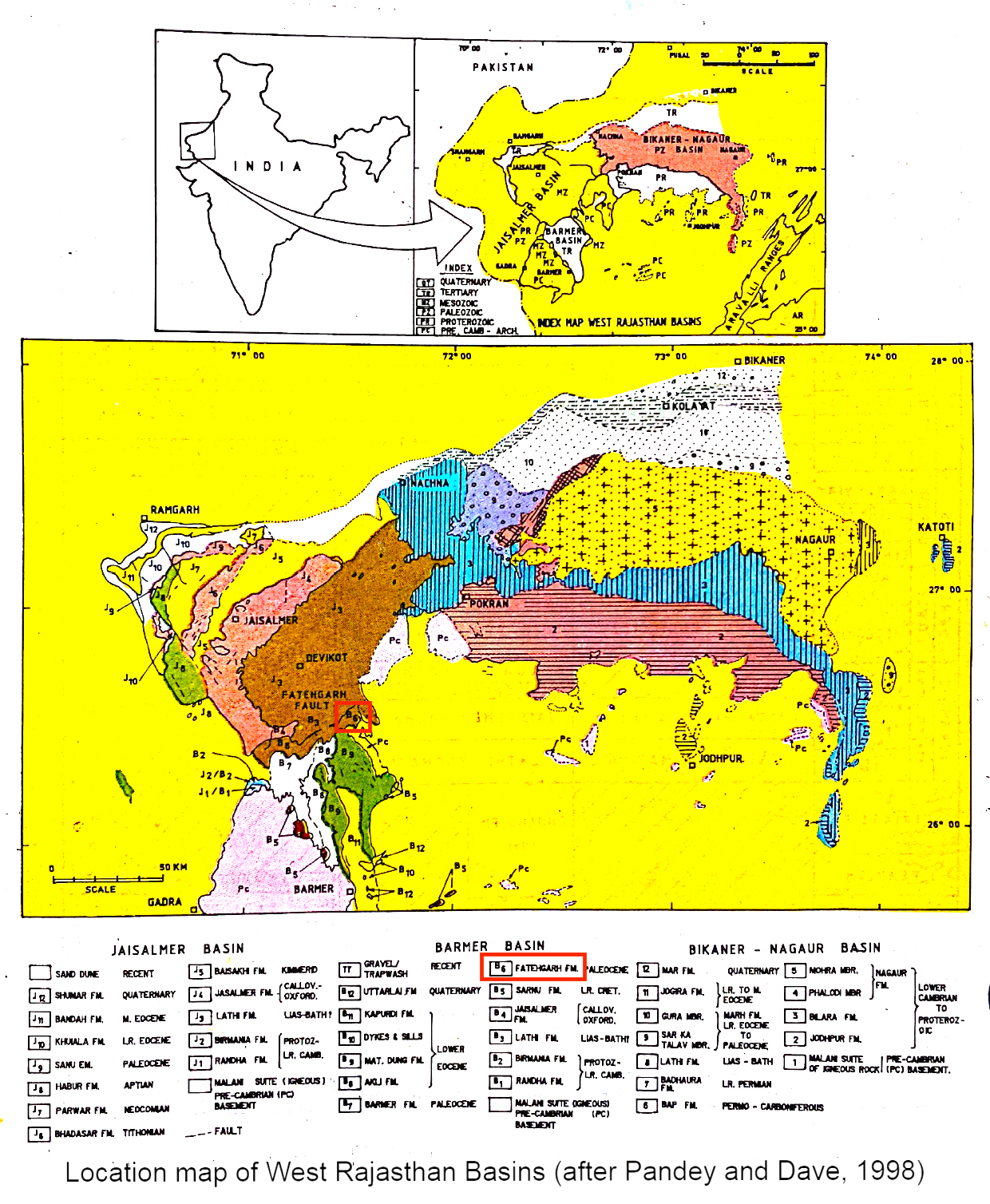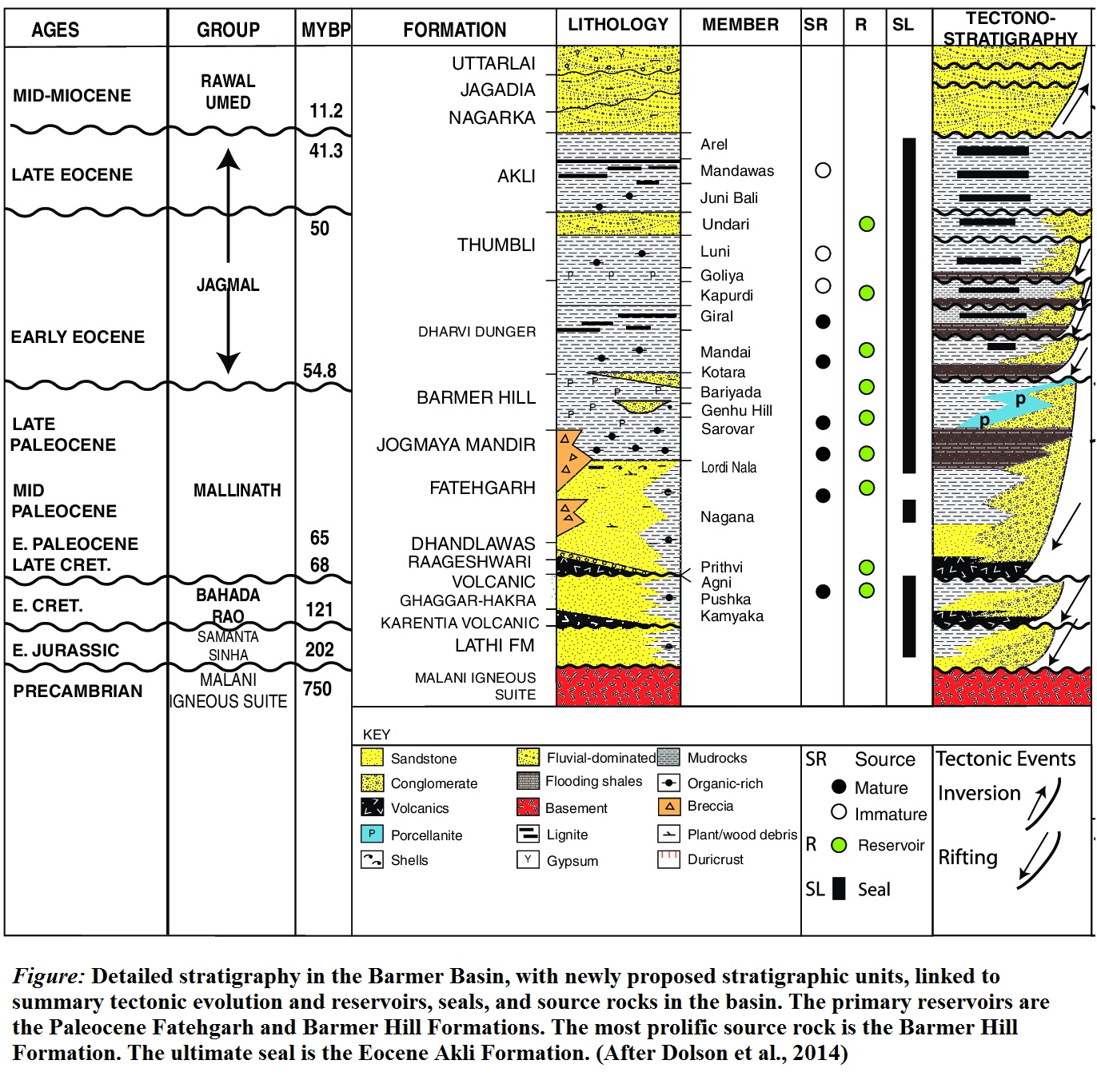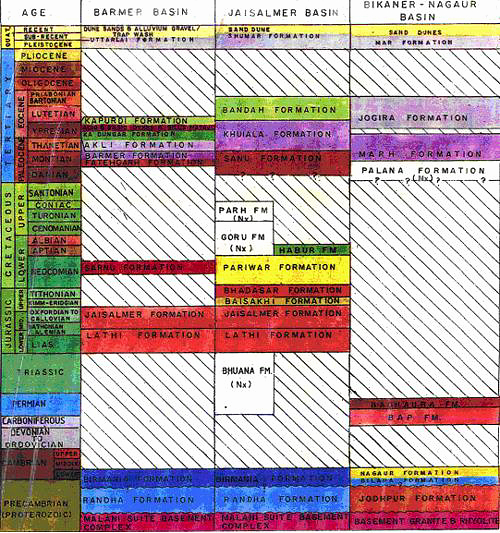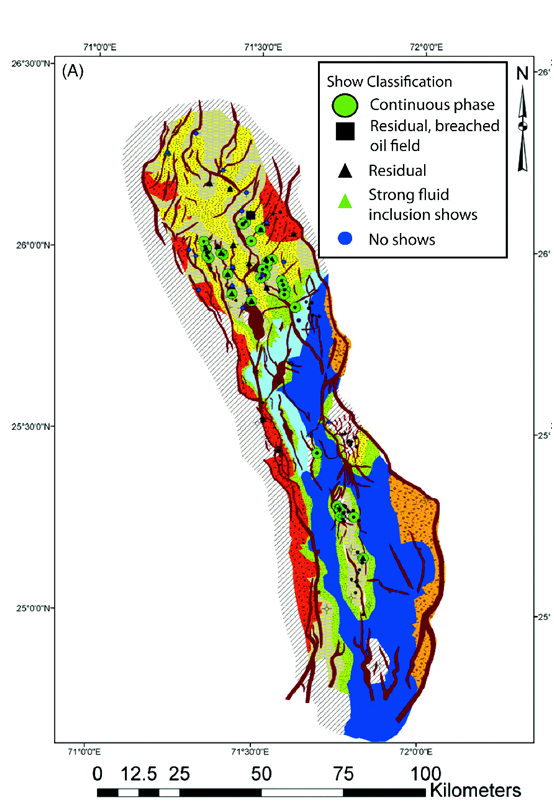Fatehgarh Fm
Type Locality and Naming
OUTCROP: Type section is in Fault scarp south of Fatehgarh village. Dasgupta et al (1973) designated Fatehgarh Formation for a sequence of sandstones-siltstone alternations having coquina beds in its upper part. Later, it was firmed up as a formation (Dasgupta, 1974) divisible into two members: Lower Vinjori Member and the Upper Sajit Member. [Original Publication: Dasgupta, S.K., Dhar, C.L and Mehta, V.K., 1973: Progress report in western Rajasthan Shelf, ONGC report. (unpublished)]. Reference section: Fategarh Scarp, for Vinjori Member and Sajit Scarp section for Sajit Scarp Member.
[Figure 1: Location map of West Rajasthan Basins (after Pandey and Dave, 1998)]
Lithology and Thickness
Sandstone. In the type section, the formation has two distinct lithounits which are separated by the absence and presence of fossils respectively. The lower Vinjori Member is devoid of fauna while upper Sajit Member contains coquina beds. It is further divided into Lordi Nala Member, Nagana Member. Its maximum thickness in type area is about 140m.
[Figure 2: Detailed stratigraphy in the Barmer Basin, with newly proposed stratigraphic units, linked to summary tectonic evolution and reservoirs, seals and source rocks in the basin. The primary reservoirs are the Paleocene Fatehgarh Fm and Barmer Hill Fm. The most prolific source rock is the Barmer Hill Formation. The ultimate seal is the Eocene Akli Fm (Dolson et al., 2015)]
Relationships and Distribution
Lower contact
The lower boundary is unconformable with underlying Lathi Fm (early Jurassic), or the Raageshwari Volcanic Fm (end-Cretaceous)
Upper contact
The upper boundary is unconformable with overlying Akli Fm in Fatehgarh scarp, or is conformable with Barmer Hill Fm in Barmer Hill section.
Regional extent
The outcrops of the formation are limited to the northern part of the basin along prominent arcuate Fategarh fault scarp which rises above the flat ground where Lathi Fm abuts against the fault.
[Figure 3: Stratigraphic Correlation of Rajasthan Basins (from dghindia.gov.in)]
GeoJSON
Fossils
The formation is devoid of fauna. However, it has been correlated with non-marine sandstone of Mohmad ki Dhaini Member of Sanu Fm of Jaisalmer Basin.
Age
Depositional setting
Additional Information
Oil and Gas: Fatehgarh Formation northern facies have porosities varying from 17 to 33% and permeabilities of 200 mD to 20 darcys. (Dolson et al., 2015).
[Figure 3: Paleogeographies of the Upper Fatehgarh Formation (Dolson et al., 2015)]



